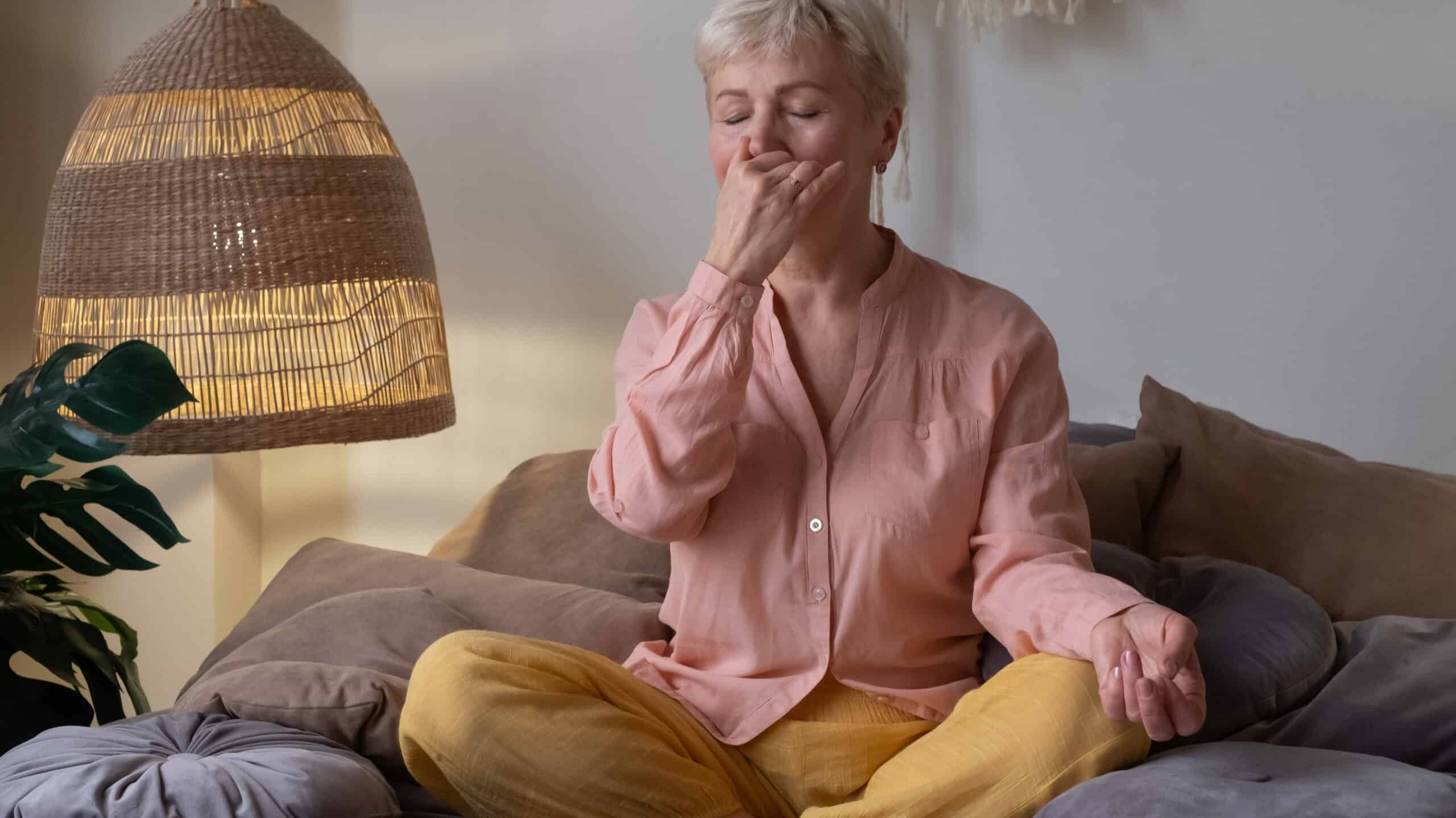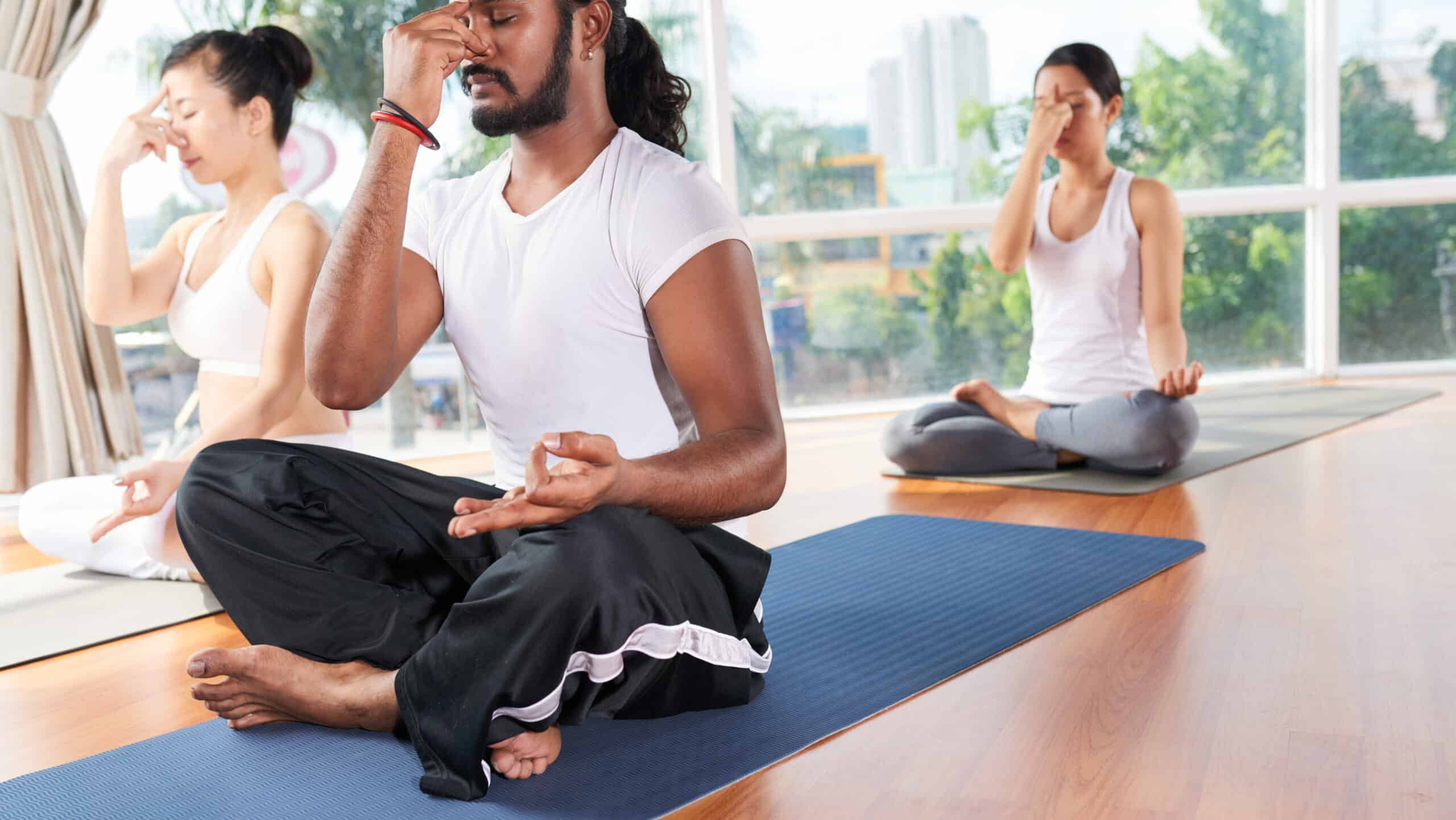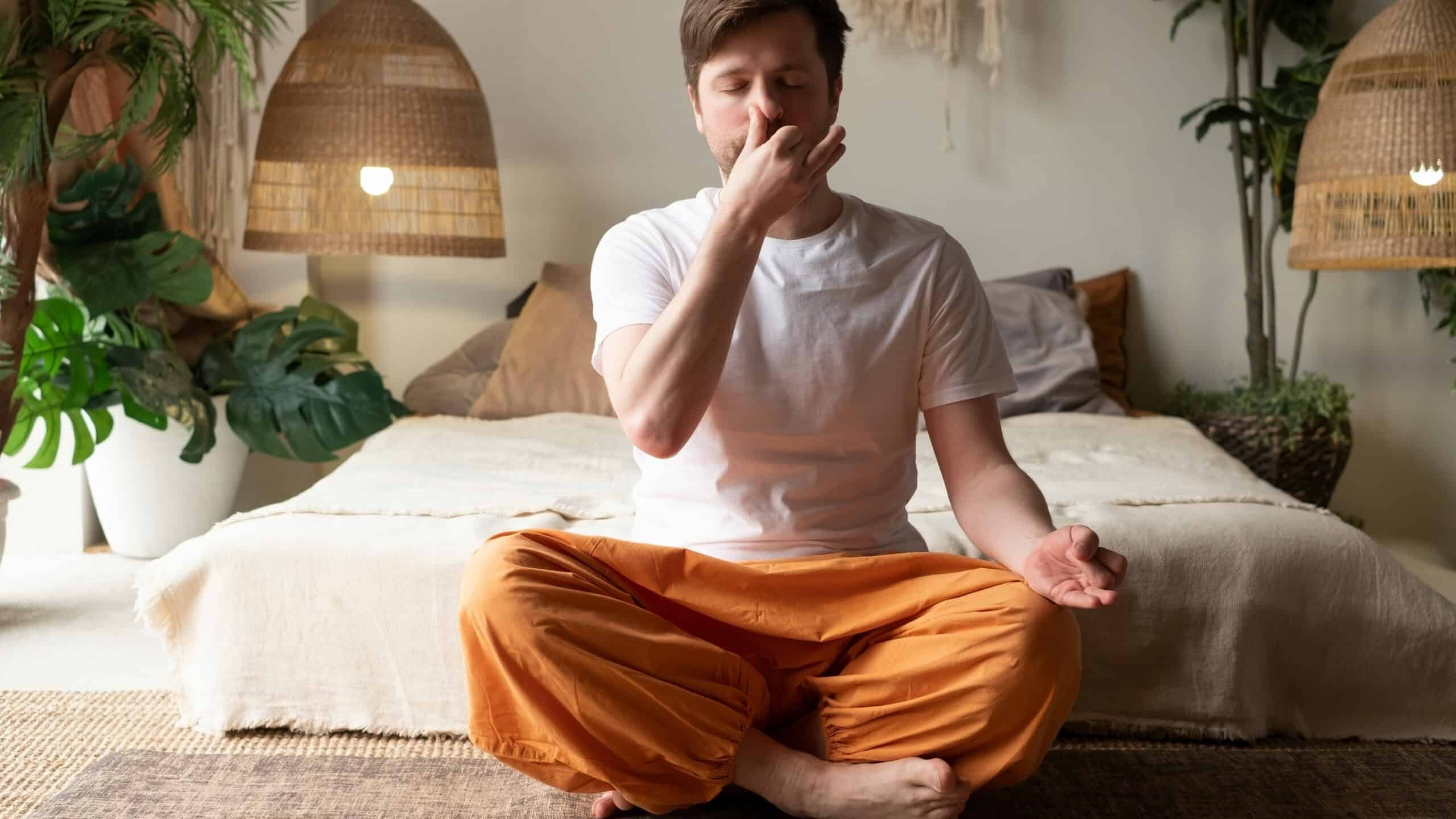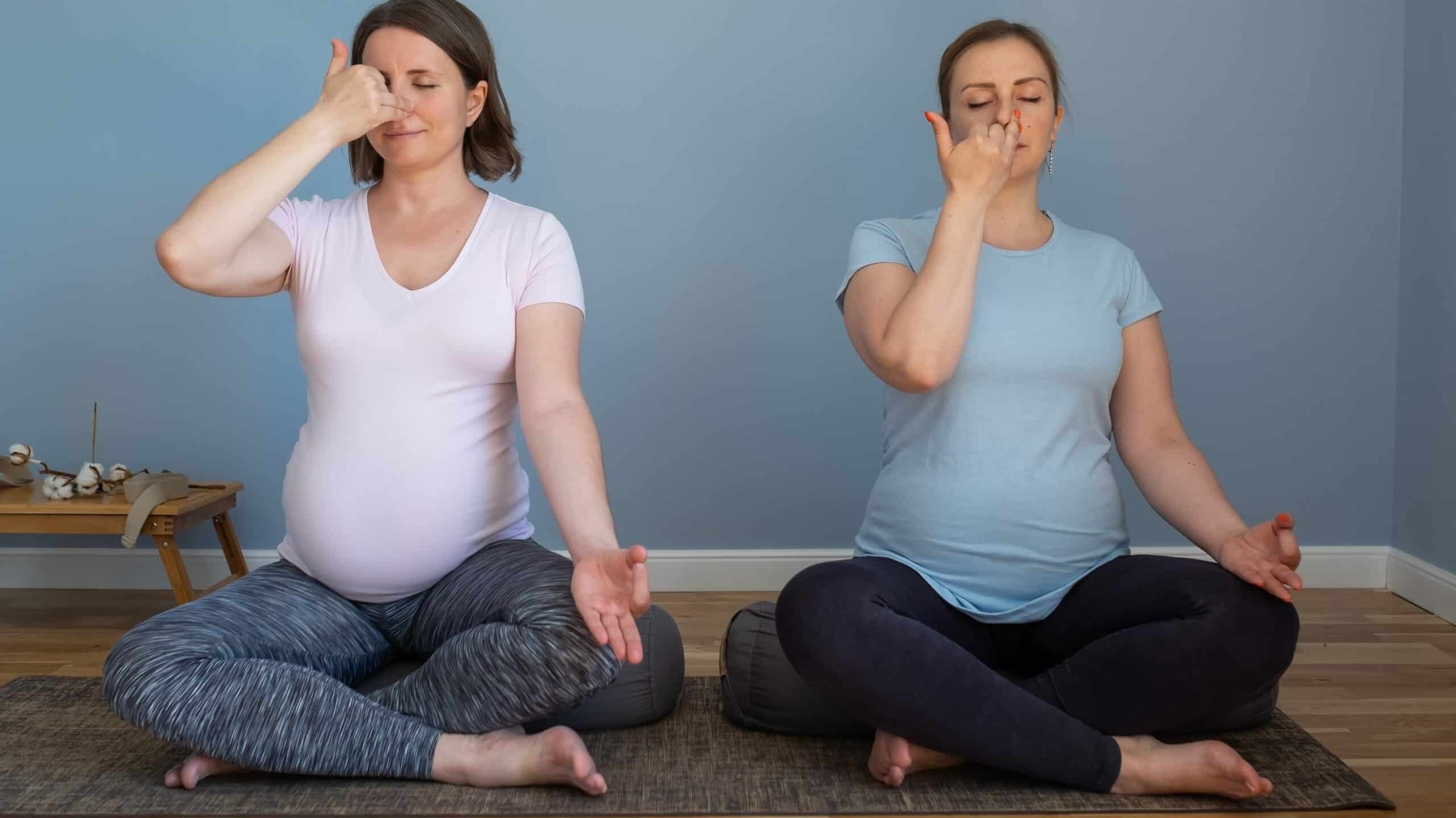Recent years have seen a surge in the popularity of alternate nostril breathing, an ancient yogic practice known to bring many physical and mental health benefits. As a powerful tool for relaxation and stress relief, this technique can be easily incorporated into your daily routine.
In this blog post, we will explore the many advantages of practicing alternate nostril breathing regularly, including anxiety reduction and improved respiratory endurance. We’ll look into how to do this breathing exercise properly, and when it’s best to make use of it.
Furthermore, we will discuss precautions to consider before starting your practice and how alternate nostril breathing can enhance meditation sessions by promoting focus and mental clarity. Finally, we’ll introduce additional techniques that complement this transformative breathwork practice.
Benefits of Alternate Nostril Breathing

Practicing alternate nostril breathing can provide numerous benefits, including relaxation, reduced anxiety, and overall well-being. This technique may also help lower risk factors associated with cardiovascular disease by improving lung function and respiratory endurance while lowering heart rate. This article examines the potential advantages of engaging in alternate nostril breathing as part of a regular practice.
Relaxation for the Body and Mind
Alternate nostril breathing is known to relax both the body and mind by promoting a sense of balance between the two hemispheres of the brain. As you make this technique a regular part of your life, you may experience improved concentration and less stress when tackling tasks.
Anxiety Reduction
Nasal respiration technique has been demonstrated to decrease anxiety in people who use it as a part of their regular practice. By regulating breath patterns through alternating nostrils, practitioners are able to achieve greater mental clarity which aids in managing stress more effectively.
Lung Function and Respiratory Endurance Improvement
- The regular practice of alternate nostril breathing exercises can lead to improved lung function due to its emphasis on deep inhalations that expand lung capacity over time.
- In addition, practicing these techniques helps increase respiratory endurance as they train your lungs to work more efficiently during periods of physical exertion or high-stress situations.
- A study published in the International Journal Of Yoga found that participants who practiced alternate nostril breathing showed significant improvements in pulmonary functions compared with those who did not practice this technique (source).
Lowered Heart Rate Promoting Cardiovascular Health
By focusing on slow, controlled breaths during alternate nostril breathing exercises, practitioners can effectively lower their heart rate. This reduction in heart rate is associated with a decreased risk of cardiovascular disease and other related health issues. A study published in the Journal of Alternative and Complementary Medicine found that participants experienced significant reductions in both systolic and diastolic blood pressure after practicing alternate nostril breathing for just four weeks.
The benefits of alternate nostril breathing are numerous, and with proper technique, it can be a powerful tool for relaxation and improved wellbeing. To gain the most out of alternate nostril breathing, let’s explore how to do it properly.
How to Practice Alternate Nostril Breathing

Practicing alternate nostril breathing is a simple yet effective technique that can be easily incorporated into your daily routine. Follow these steps to learn how to perform this yogic breath control practice:
Finding a comfortable seated position
To begin, find a quiet and comfortable space where you can sit with your spine straight and shoulders relaxed. You may choose to sit on the floor with your legs crossed or use a meditation cushion for added support.
Hand placement for proper technique
- Sit with your left hand on the knee, palm facing up and right hand near the nose, thumb, or index finger closing off one nostril at a time.
- Gently close off one nostril at a time with your right thumb or index finger, while the other fingers rest on your nose bridge or forehead area.
- Your other fingers should rest gently on the bridge of your nose or forehead area.
Inhaling and exhaling patterns
The key aspect of alternate nostril breathing is alternating between inhaling through one nostril while closing off the opposite side. Here’s how it works:
- Gently block the right nostril with your thumb or index finger; then draw in air through the left.
- At peak inhalation, release pressure from the right nostril while simultaneously closing off the left side with the ring finger; then exhale fully through the now-opened right side.
- Inhale again through the same (right) side before switching back over by closing off the right nostril and exhaling through the left side.
- Continue this pattern for several rounds, focusing on slow and controlled breaths while maintaining a relaxed posture.
As you become more comfortable with the practice of alternate nostril breathing, you can gradually increase the duration or incorporate it into your existing breathing exercises and meditation practices. Remain attentive to your body’s cues and if any issues come up while practicing, seek medical advice.
Practicing alternate nostril breathing is a great way to reduce stress and improve overall well-being. For optimal results, make alternate nostril breathing a regular part of your daily routine. To get the most out of this practice, you should consider when to incorporate it into your lifestyle for maximum benefit.
When to Practice Alternate Nostril Breathing

You can incorporate alternate nostril breathing into your daily routine at any time that feels most suitable for you. Whether it’s in the morning as part of a yoga or meditation session or during breaks throughout the day when feeling stressed or overwhelmed, this simple yet effective technique is versatile enough to be practiced whenever needed.
Morning practice alongside yoga or meditation sessions
Starting your day with yoga or meditation can set a positive tone and help you feel more centered. Adding alternate nostril breathing to these practices can enhance their benefits by promoting relaxation and reducing anxiety. Try incorporating this breathing exercise before, during, or after your regular morning routine for optimal results.
Midday stress relief breaks
Incorporating short breaks throughout your workday can help alleviate stress and improve focus. Practicing alternate nostril breathing during these moments allows you to reset mentally and physically while also providing an opportunity for mindfulness amidst busy schedules. Consider setting aside 5-10 minutes each afternoon for this rejuvenating breathing practice.
- Note: If practicing at work, find a quiet space where you won’t be disturbed such as an empty conference room, outdoor area, or even inside your car.
- If possible, keep shoulders relaxed and maintain proper posture while seated to ensure maximum effectiveness of the technique.
Evening wind-down routines
An evening ritual that includes calming activities like reading, gentle stretching, or alternate nostril breathing can help signal to your body that it’s time to wind down and prepare for sleep. Practicing this calming activity prior to sleep can assist in lowering stress and creating a feeling of tranquility, making it simpler to drift off into slumber for an invigorating rest.
Remember, the key is consistency; the more you practice alternate nostril breathing regularly, the greater its impact on your overall well-being. Experiment with different times of day and find what works best for you as part of your personalized wellness routine.
Alternate nostril breathing can be a beneficial addition to any yoga or meditation practice, and should always be done with caution. Before beginning alternate nostril breathing, it is essential to consult medical professionals if you have any pre-existing health issues.
Precautions Before Starting Your Practice

As with any new exercise regimen or wellness practice, it’s essential to consult with your doctor before starting alternate nostril breathing especially if you have pre-existing medical conditions such as asthma or high blood pressure to ensure safety and determine whether this method is appropriate for you.
Consultation with Healthcare Professionals
To ensure the best possible outcomes for your health and well-being, consulting with healthcare professionals is a must. Therefore, seeking the advice of healthcare professionals can help identify potential risks and tailor practices to suit individual needs. You may want to discuss monitoring your blood pressure at home, especially if hypertension is a concern.
Considerations for Those With Pre-Existing Medical Conditions
- Asthma: For individuals suffering from asthma, it’s important to approach alternate nostril breathing cautiously. While some studies suggest that regular practice can improve lung function (source) in healthy individuals, consulting an expert will help determine its suitability for those living with respiratory challenges.
- Blood Pressure: High blood pressure patients should also seek professional guidance before incorporating alternate nostril breathing into their routine. Although certain yogic breath control practices are known to lower heart rate and promote cardiovascular health (source), personalized recommendations are vital in ensuring safe implementation.
- Nasal Congestion: If you are experiencing nasal congestion or sinus issues, it may be challenging to practice alternate nostril breathing effectively. In such cases, consider exploring other breathing exercises that can still provide relaxation and stress relief without exacerbating your symptoms.
In conclusion, taking necessary precautions and seeking professional advice before starting alternate nostril breathing is crucial for a safe and effective experience. Remain mindful of your body’s cues and adjust the practice as needed.
Before embarking on alternate nostril breathing, it is essential to seek medical advice as this practice can have an impact on existing health issues. Now, let’s look at how this method can aid in deepening meditation and aiding mental acuity.
Enhancing Meditation with Alternate Nostril Breathing

Integrating alternate nostril breathing into your meditation practice can help to quiet and still the mind, allowing for a deeper and more focused experience. By promoting relaxation and reducing anxiety, this technique can enhance overall mental clarity during meditation sessions.
Quieting the Mind for Better Focus
Incorporating alternate nostril breathing as part of your regular meditation routine helps in calming down racing thoughts that often hinder focus. This yogic breath control exercise balances both hemispheres of the brain, enabling you to concentrate better on your meditative practice. The harmonious flow of energy through alternating nostrils fosters a sense of inner peace that is essential for deepening one’s mindfulness journey.
Promoting Relaxation within Meditation
The soothing effects of practicing alternate nostril breathing regularly are not limited to mental well-being but also extend to physical relaxation. As you breathe deeply through each nostril, it stimulates the parasympathetic nervous system responsible for inducing calmness throughout the body. With shoulders relaxed and greater airflow achieved by switching between dominant and opposite nostrils, stress levels decrease significantly making it easier to slip into a tranquil state during meditation.
Improved Mental Clarity
- Nostril dominance: Balancing out left and right nasal passages through alternate nostril breathing helps regulate nostril dominance cycles, which may contribute towards enhanced cognitive functioning.
- Oxygenation: This breathing practice increases the oxygen supply to the brain, which is crucial for maintaining mental clarity and focus during meditation.
- Reduced anxiety: As mentioned earlier, alternate nostril breathing has a calming effect on the nervous system. This reduction in anxiety allows you to approach your meditation practice with a clear and composed mind.
Incorporating alternate nostril breathing into your daily routine can significantly improve your overall meditation experience by fostering relaxation, enhancing concentration, and promoting mental clarity. Incorporating this easy yet influential approach into your spiritual quest can lead to long-term betterment in both physical and mental health.
By incorporating alternate nostril breathing into your meditation practice, you can experience greater relaxation and improved mental clarity. Incorporating further methods alongside alternate nostril breathing, such as diaphragmatic breathing and guided visualizations, can enhance the relaxation and mental clarity experienced during meditation.
Additional Techniques to Complement Alternate Nostril Breathing

To further support stress reduction and overall well-being, consider incorporating additional yogic breath control practices or mindfulness techniques alongside alternate nostril breathing. These complementary methods may include diaphragmatic breathing exercises or guided visualization practices.
Diaphragmatic Breathing Exercises
Diaphragmatic breathing, also known as deep belly breathing, is a technique that focuses on engaging the diaphragm muscle during inhalation and exhalation. This method can help increase lung capacity, promote relaxation, and reduce anxiety levels. To practice diaphragmatic breathing:
- Sit comfortably with your back straight and shoulders relaxed.
- Place one hand on your chest and the other just below your rib cage.
- Inhale slowly through your nose for a count of four, allowing your abdomen to rise while keeping the chest still.
- Exhale gently through pursed lips for a count of six, feeling the abdominal muscles contract inwardly towards the spine.
- Repeat this process several times until you feel more relaxed and centered.
Guided Visualization Techniques
Utilizing mental images to produce advantageous transformations in emotions, physical sensations, or ideas is known as guided visualization or creative visualization. By focusing on calming scenes or situations that evoke feelings of peace and tranquility such as envisioning yourself at a serene beach or walking through a lush forest you can help reduce stress and promote relaxation. To practice guided visualization:
- Discover a calm, snug area to be undisturbed.
- Close your eyes and take several deep breaths to center yourself.
- Imagine a peaceful scene that brings you feelings of comfort and serenity, such as sitting by the ocean or lying in a field of wildflowers.
- Fully immerse yourself in this mental image, engaging all five senses to smell the saltwater breeze or hear the rustling leaves around you to make it feel more vivid and real.
- Spend several minutes exploring this calming environment before gently bringing your awareness back to the present moment when ready.
Incorporating these additional techniques alongside alternate nostril breathing can provide even greater benefits for overall wellness, helping to create an effective daily routine for managing stress levels and promoting optimal well-being.
Frequently Asked Questions Alternate Nostril Breathing
Is alternate nostril breathing effective?
Yes, alternate nostril breathing is an effective technique for promoting relaxation, reducing anxiety, improving lung function and respiratory endurance, and lowering heart rate. Many practitioners also report enhanced mental clarity and focus during meditation sessions when incorporating this practice.
Who shouldn’t do alternate nostril breathing?
Individuals with pre-existing medical conditions such as asthma, COPD, or any other respiratory issues should consult their healthcare professional before practicing alternate nostril breathing. Pregnant women should also seek advice from a qualified expert prior to engaging in this practice.
Does alternate nostril breathing stimulate the vagus nerve?
Alternate nostril breathing can help stimulate the vagus nerve, which plays a crucial role in regulating various bodily functions including heart rate and digestion. This stimulation may contribute to overall relaxation and stress reduction experienced by practitioners of this technique.
How long should you practice alternate nostril breathing?
It’s recommended to start with 5 minutes per session when beginning your practice of alternate nostril breathing. As you become more comfortable with the technique, gradually increase your duration up to 15 minutes or longer if desired for optimal benefits.
Why is alternate nostril breathing good for exciting the nervous system?
Alternate nostril breathings help balance both sides of the brain while activating different aspects of our nervous system: sympathetic (fight-or-flight response) and parasympathetic (rest-and-digest). By balancing these systems through controlled inhalation and exhalation patterns, it promotes relaxation and reduces stress.
What is the history of alternate nostril breathing?
Alternate nostril breathing, also known as Nadi Shodhana or Anulom Vilom Pranayama, has its roots in ancient Indian yogic practices. It’s a key component of pranayama, which focuses on breath control to enhance physical and mental well-being. The technique has been passed down through generations for thousands of years.
Conclusion
Overall, alternate nostril breathing is a powerful practice that offers numerous benefits for both the body and mind. By regularly incorporating this technique into your routine, you can experience improved lung function, reduced anxiety levels, and enhanced mental clarity. Whether you choose to practice in the morning alongside yoga or meditation sessions or as a midday stress relief break, alternate nostril breathing can help promote relaxation and well-being.

